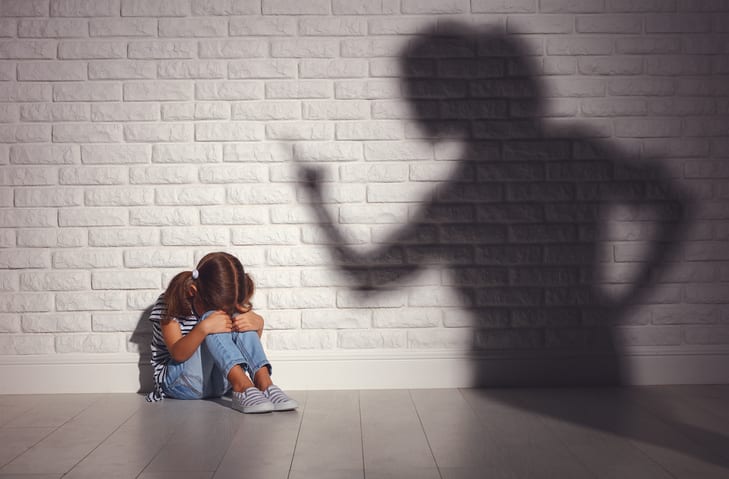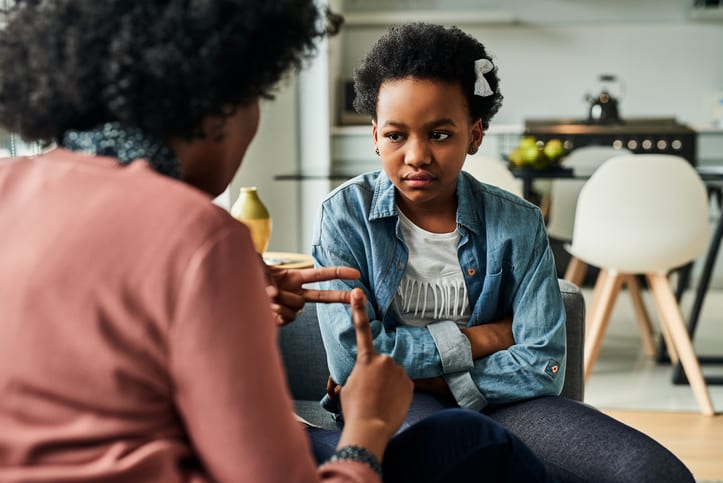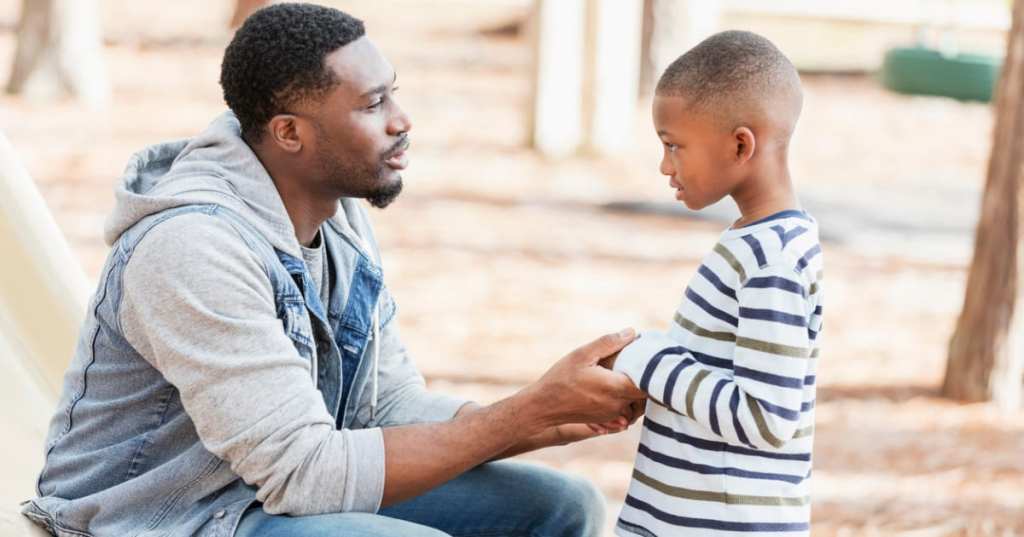Trending Now
These days, many parents are on the hunt for discipline methods that help guide kids from childhood into adulthood without all of the drama and crying and sometimes spanking that we endured growing up.
A watershed moment for me was reading that the term discipline comes from the word disciple. So, if you’re not teaching the child something with your discipline method, you’re doing it wrong.
If you’re still unsure how to handle discipline in your home, let me introduce you to the conscious discipline method.

Image Credit: iStock
It’s the brainchild of psychologist Becky Bailey, who wants to help parents work with their children instead of against them when they’re struggling with a certain situation.
Conscious Discipline is a caregiving philosophy that teaches adults to regulate their emotions so that they can help guide children through doing the same. It recognizes that the body’s initial response is stress, and gives parents ways to mitigate that so that they can respond to their children with rational thinking, understanding, and problem solving instead of punishment.
The method takes neuroscience, child development, and social emotional learning into consideration when encourages safety, connection, and problem solving in place of rewards and punishments.

Image Credit: iStock
It’s main difference from other methods is that Conscious Discipline focuses mostly on the adult in the situation, not the child, and how much they’re able to control.
The method has fared well in several independent studies, winning designations and awards, and most importantly, connecting with parents.
To explain how Conscious Discipline words, Dr. Bailey uses three brain states: the survival state, the emotional state, and the executive state.
When we snap or children throw tantrums, that’s the survival state taking over, and it can be hard to shove those physiological responses to the side in order to think clearly and problem solve.

Image Credit: iStock
Dr. Gayani DeSilva reminds us that when kids react like this,
“It’s not that they’re being disrespectful or mean. They’ve got all this adrenaline in their body and they don’t know what to do with it.”
In an emotional state, humans can become verbally aggressive, but in the executive state, we’re calm, alert, and ready to listen and learn.
The Conscious Discipline method aims to help parents remain in the executive state – or at least, to not engage with your kids until you are, says Amy Speidel, a former teacher and Conscious Discipline master instructor.
“The only way for us to get into the facts is to soothe the emotional state enough so that it can listen and be thoughtful, and grab a hold of it’s tools.”
One of those methods is deep breathing, along with smiling, explains DeSilva.
“Slowing your breathing actually slows down the metabolism and the parasympathetic response.
It makes it more of a sympathetic response and diverts energy back to our brain so you can actually use your cognition to understand and assess the situation, and then come up with a plan.”
Smiling has a similar effect, telling your amygdala there’s no reason to be afraid.
Once everyone feels safe and calm, adults and children can work together to figure out how to respond differently going forward.
Speidel recommends stepping away for a minute if you can feel yourself starting to lose control, and looking into a mirror to talk yourself down.

Image Credit: iStock
Instead of yelling or threatening you child, try sitting with them and saying “you’re safe, breathe with me,” and guiding them through breathing exercises of their own.
Aside from thinking about a time you wish you’d been more patient and imagining how you would like it to go differently in the future, here are 3 other tips you can try if you’re interesting in trying this method in your home.
1. Embrace the Routine
Things like charts that show children your expectations for them, and what they can expect from their day, are extremely helpful in mitigating frustrations. It helps kids feel empowered as they check off the things they’ve done, and research has shown for some times that routines themselves help kids feel safe.
2. Create ‘I Love You’ Rituals
Any activity that includes eye contact, touch, and presence in a playful situation encourages connection, and silly activities like singing and dancing, or acting out a favorite song, shows children love and affection through shared experience.
3. Remember It’s A Process
Start with expecting better of yourself 20% of the time and go from there. We will all fail sometimes, and backslide, and you need to be gentle with yourself.
The best thing you can do is to apologize to your child for the way you handled something, and ask permission to try again. It’s important that children see us both make mistakes and apologize for them, and then learn from them, so that they can emulate that process in their own lives.
Much of this really doesn’t come naturally, but if you’re committed to a more peaceful home and a more productive parenting experience, the conscious discipline method might be for you.
If you try this, come back and let us know how it’s worked for your family!






